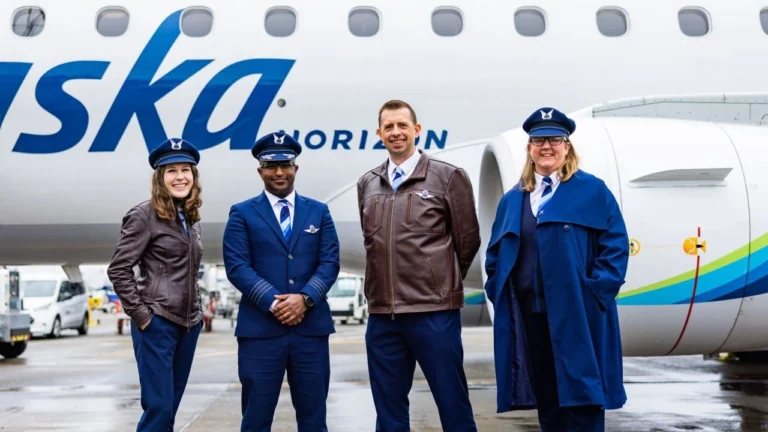Alaska Airlines (AS) offers competitive salary to its pilots, which vary based on experience and position. First Officer at Alaska Airlines earns annually approximately $107,876 and after having 12 years of experience pilots can expect $225,800+. Captains earn annually at starting they get approximately $229,325 and after having 12 years of experience they earn $326,640.
The average salary for pilots at Alaska Airlines is around $124,842, which is significantly higher than the national average for pilots. Pilots receive per diem allowances (around $2.00 to $2.55 per hour) for travel-related expenses. Other benefits include health insurance, a 401(k) plan with matching contributions, and potential bonuses based on company performance.
Table of contents
- Alaska Airlines First Officer Salary
- Alaska Airlines Captain Salary
- Alaska Airlines Hourly Salary
- What factors influence a pilot’s salary at Alaska Airlines?
- Where are Alaska Airlines Pilot Bases
- What Airplanes are in the Alaska Airlines Fleet?
- What benefits do Alaska Airlines pilots get?
- What are the required hiring qualifications for Alaska Airlines Pilots?
- Steps to apply for an Alaska Airlines pilot job?
- Alaska Airlines Pilot Salary – FAQs
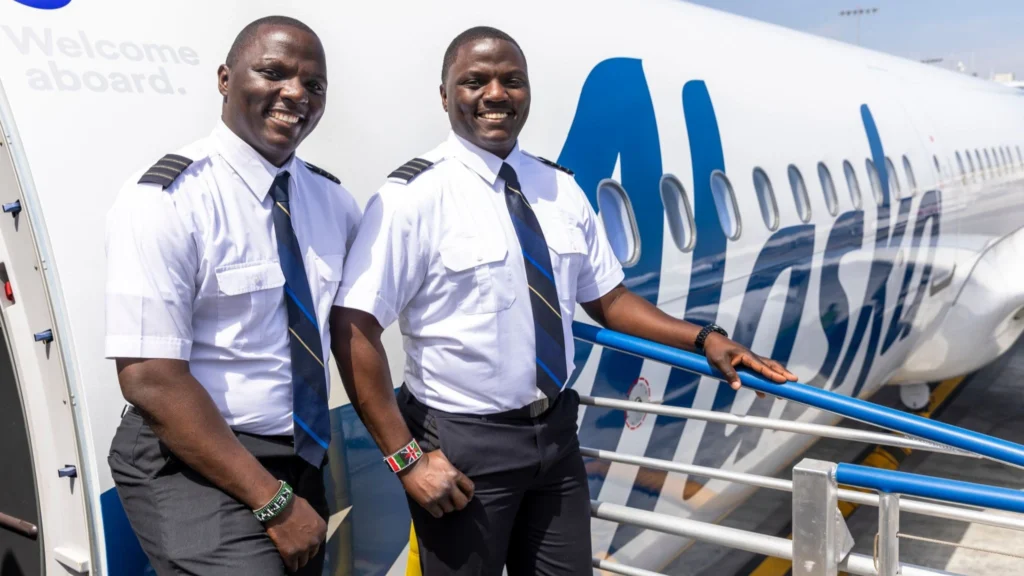
Alaska Airlines First Officer Salary
The salary for First Officers at Alaska Airlines varies significantly based on experience and flight hours. Here’s a detailed overview of what you can expect in terms of compensation.
| Years of Experience | Estimated Annual Pay (75 Hours per month) |
| 1 | $107,876 |
| 5 | $200,000 |
| 12 | $225,800 |
N0TE: Alaska Airlines First Officers Annual Salary/Pay depends upon their Rank, Experience, Flight Hours, Type of Aircraft, Route Type, and Market Conditions.
Salary Range
- Starting Salary: New First Officers can expect to earn approximately $107,846 in their first year. This is based on flying around 80 hours per month.
- Mid-Career Pay: By the fifth year, salaries can rise to about $200,000 annually.
- Experienced Officers: After twelve years with the airline, First Officers can earn around $225,800 per year.
Average Salary Insights
According to recent data:
- The average salary for First Officers at Alaska Airlines is approximately $138,640, which is notably higher than the national average for pilots. This figure reflects a competitive pay structure within the industry.
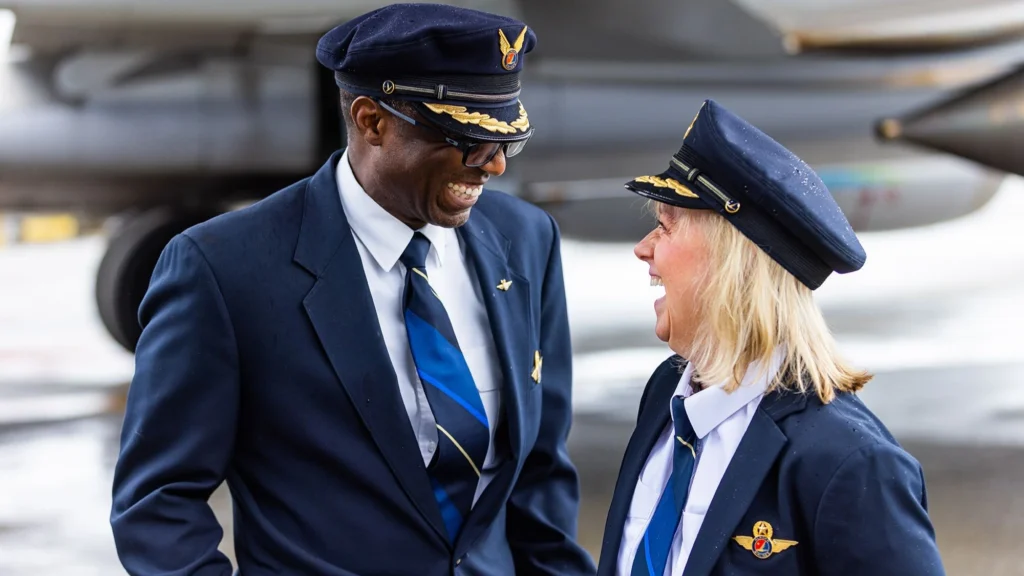
Alaska Airlines Captain Salary
Captains at Alaska Airlines enjoy a competitive salary that reflects their experience and the demands of their role. Here’s a comprehensive breakdown of what you can expect in terms of compensation.
| Years of Experience | Estimated Annual Salary (75 Hours per month) |
| 1 | $299,325 |
| 5 | $309,302 |
| 12 | $326,640 |
N0TE: Alaska Airlines Captains’ Annual Salary/Pay depends upon their Rank, Experience, Flight Hours, Type of Aircraft, Route Type, and Market Conditions.
Salary Overview
- Starting Salary: In their first year, Captains at Alaska Airlines can earn approximately $299,325 annually, assuming they fly around 80 hours per month.
- Mid-Career Pay: By the fifth year, this salary typically increases to about $309,302.
- Experienced Captains: After twelve years with the airline, Captains can earn around $326,640 per year.
Hourly Rates
Transitioning to hourly compensation, Captains earn about $340.25 at the top scale. This figure reflects the airline’s commitment to offering competitive wages that align with industry standards.
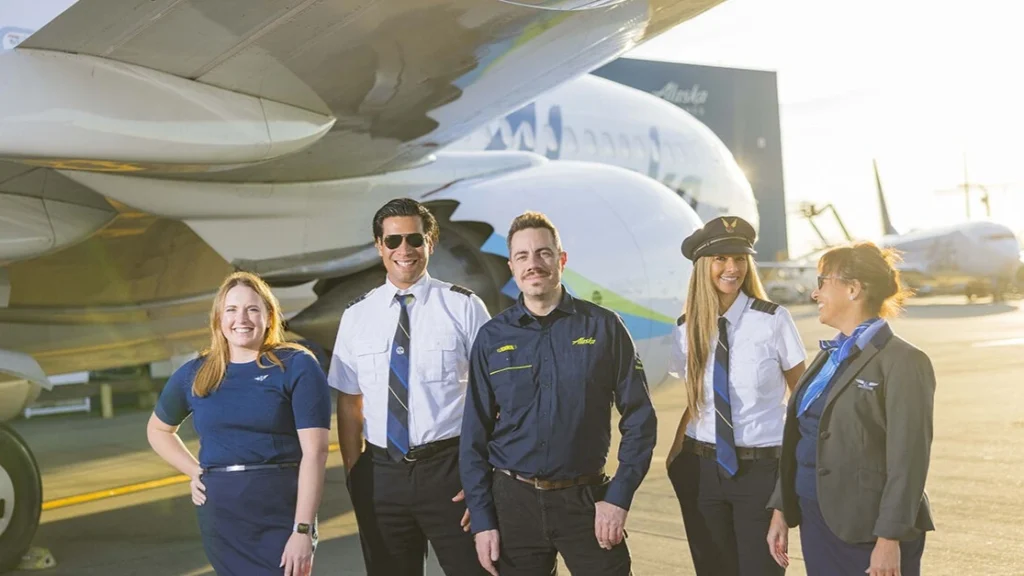
Alaska Airlines Hourly Salary
At Alaska Airlines, pilots earn competitive hourly wages that reflect their experience and the aircraft they operate. Here’s a detailed look at the hourly pay for both First Officers and Captains.
| Years of Service | Captain | First Officer |
| 0 -1 | $332.91 | $119.92 |
| 1-2 | $335.49 | $177.91 |
| 2-3 | $338.07 | $205.72 |
| 3-4 | $340.65 | $213.83 |
| 4-5 | $343.23 | $222.11 |
| 5-6 | $345.81 | $228.35 |
| 6-7 | $348.39 | $234.37 |
| 7-8 | $350.97 | $239.65 |
| 8-9 | $353.55 | $241.94 |
| 9-10 | $356.13 | $245.67 |
| 10-11 | $358.71 | $247.69 |
| 11-12 | $361.29 | $249.76 |
N0TE: Alaska Airlines Pilot’s Hourly Salary/Pay depends upon their Rank, Experience, Flight Hours, Type of Aircraft, Route Type, and Market Conditions.
First Officer Hourly Pay
- Starting Hourly Rate: New First Officers can expect to earn approximately $119 per hour during their first year of service.
- Highest Hourly Rate: With experience, particularly by the sixth year, this rate can increase to about $249.22 per hour.
Captain Hourly Pay
- Starting Hourly Rate: Newly appointed Captains typically earn around $332 per hour in their first year.
- Highest Hourly Rate: Experienced Captains, particularly those with several years at the airline, can earn up to $361 per hour by the sixth year.

What factors influence a pilot’s salary at Alaska Airlines?
Several factors influence a pilot’s salary at Alaska Airlines:
- Rank: Captains earn more than first officers.
- Experience: Longer service typically results in higher pay.
- Flight Hours: More hours flown can lead to increased earnings.
- Type of Aircraft: Pilots flying larger aircraft may receive higher compensation.
- Route Complexity: International routes often pay more than domestic ones.
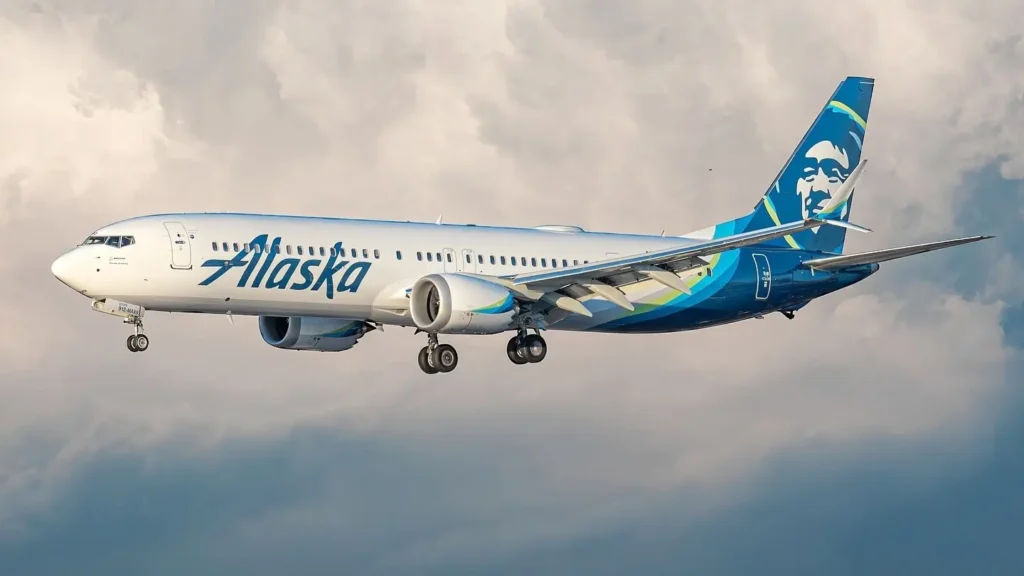
Where are Alaska Airlines Pilot Bases
Alaska Airlines operates its pilot bases, also known as domiciles, in five key locations across the United States. These bases are strategically positioned to facilitate efficient operations and crew management. The pilot bases are:
- Anchorage, Alaska (ANC)
- Los Angeles, California (LAX)
- Portland, Oregon (PDX)
- Seattle, Washington (SEA)
- San Francisco, California (SFO)
Alaska Airlines’ pilot bases are in Anchorage, Los Angeles, Portland, Seattle, and San Francisco. Each base plays a crucial role in the airline’s operations and helps maintain its extensive route network.
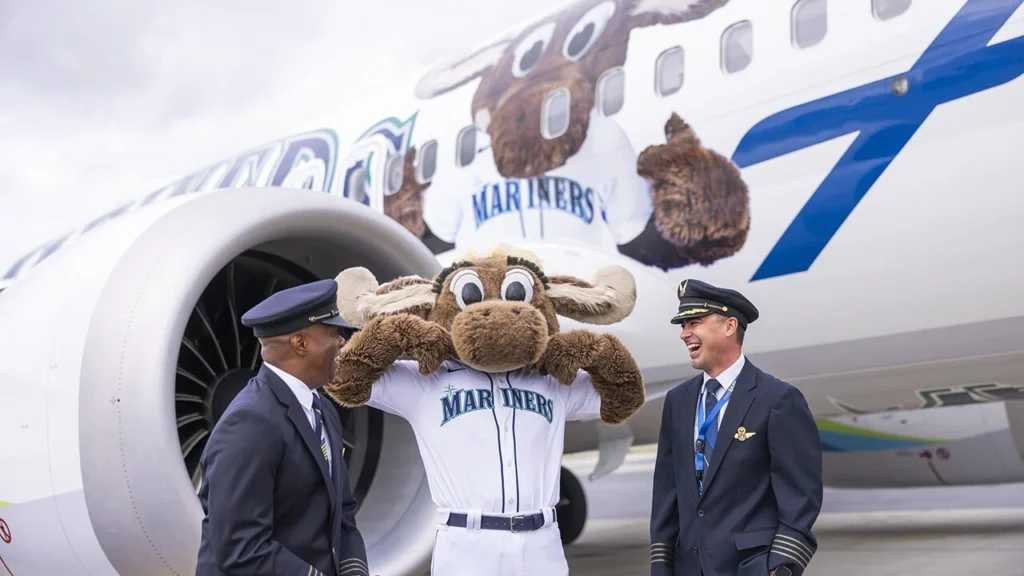
What Airplanes are in the Alaska Airlines Fleet?
Alaska Airlines maintains a diverse fleet of Boeing 737 aircraft, complemented by Embraer E175 regional jets. As of late 2024, the fleet consists of the following aircraft:
- Boeing 737-9 MAX: 72 aircraft, seating 178 passengers (16 first class, 24 premium, and 138 in the main cabin)
- Boeing 737-900ER: 79 aircraft, also seating 178 passengers
- Boeing 737-900: 7 aircraft with the same seating configuration
- Boeing 737-8 MAX: 5 aircraft, with a seating capacity of 159 (12 first class, 30 premium, and 117 in the main cabin)
- Boeing 737-800: 59 aircraft, similarly configured to the MAX variant
- Boeing 737-700: 11 aircraft, seating 124 passengers
- Embraer E175 (operated by Horizon Air): 44 aircraft, seating 76 passengers
- Embraer E175 (operated by SkyWest Airlines): 42 aircraft with the same seating capacity
Additionally, Alaska Airlines has a small cargo fleet consisting of converted Boeing freighters:
- Boeing 737-800F: 1 freighter
- Boeing 737-700F: 3 freighters
This strategic mix allows Alaska Airlines to efficiently serve a variety of routes while optimizing passenger comfort and operational efficiency.
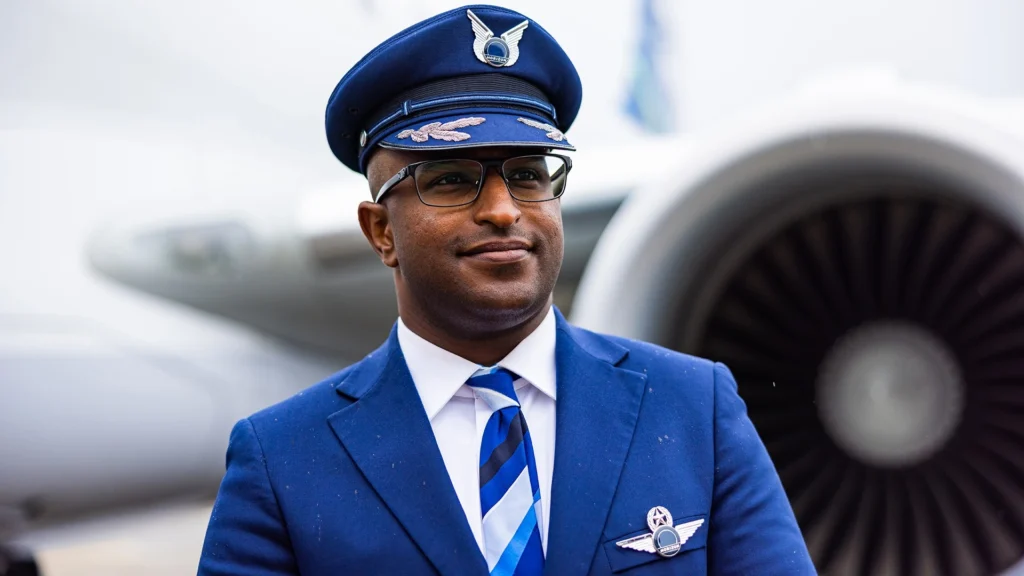
What benefits do Alaska Airlines pilots get?
Alaska Airlines offers a comprehensive benefits package to its pilots, enhancing their overall work experience and quality of life. Here are the key benefits pilots enjoy:
- Competitive Salaries: First-year first officers earn $100 per hour, while top-scale captains earn up to $340.25 per hour.
- Job Security: The airline provides stronger job security, ensuring that pilot positions grow alongside the company.
- Flexible Scheduling: Pilots have the flexibility to build their schedules, allowing them to trade and drop shifts as needed.
- Retirement Plans: Alaska Airlines offers a 401(k) plan with company matching contributions, helping pilots prepare for their future.
- Bonuses: Pilots are eligible for quarterly and annual bonus programs, rewarding performance and company success.
- Health Benefits: Comprehensive healthcare options, including family and medical leave, are available.
- Travel Perks: Pilots enjoy free and unlimited standby travel for themselves and eligible family members on Alaska and Horizon flights, as well as discounts with various travel companies.
- Career Development: The airline supports professional growth through mentorship programs, education assistance, and company advancement opportunities.
Overall, Alaska Airlines prioritizes its pilots’ well-being by offering competitive compensation, job security, flexibility, and numerous benefits that contribute to a fulfilling career.
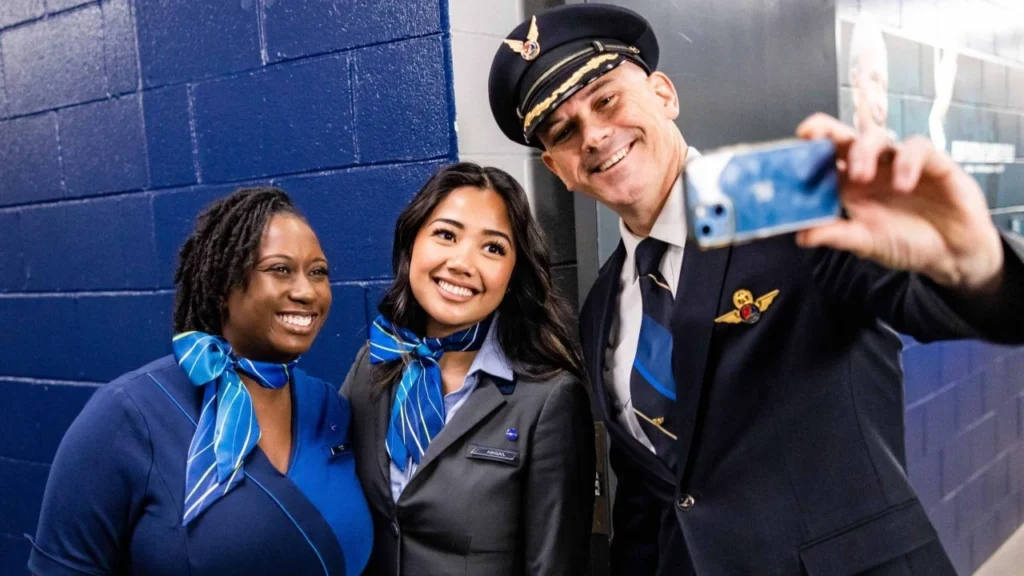
What are the required hiring qualifications for Alaska Airlines Pilots?
To become a pilot for Alaska Airlines, candidates must meet a series of specific qualifications and requirements. These criteria ensure that pilots possess the necessary skills, experience, and certifications to operate safely and effectively within the airline’s operations.
General Requirements
- Legal Authorization: Candidates must be legally entitled to live and work in the United States.
- Medical Certification: A current FAA First Class Medical Certificate is required.
- Flight Experience: Applicants must have a minimum of:
- 2,000 total flight hours in fixed-wing aircraft, or
- 1,200 hours in a high-performance military aircraft.
- Pilot-in-Command Experience: A minimum of 1,000 hours of multi-engine turbine Pilot-in-Command (PIC) time is preferred.
- FAA Certifications:
- An FAA Airline Transport Pilot (ATP) certificate is mandatory.
- A valid FAA Commercial Pilot Certificate with an Instrument rating is also required.
- Recent Flight Time: Candidates need at least 50 hours of flight time within the last 12 months.
- Educational Background: While a college degree is preferred, it is no longer strictly required. However, candidates must have at least a high school diploma or equivalent.
- Additional Documentation: Candidates must possess a valid driver’s license and a passport that allows unrestricted travel in and out of the United States.
Preferred Qualifications
- Experience with Multi-engine Aircraft: Having at least 500 hours of multi-engine airplane time is preferred.
- Age Requirement: Applicants must be at least 23 years old.
- Professional Skills: Strong judgment, leadership abilities, and a professional demeanor are essential. Familiarity with Microsoft Office and other software tools is also beneficial.
Pathways Programs
- Alaska Airlines offers programs such as the Pilot Pathways Program for Horizon pilots. This program provides preferential consideration for current Horizon pilots who log specific flight hours and maintain good standing within their ranks.
- Overall, Alaska Airlines seeks pilots who not only meet these technical qualifications but also demonstrate strong interpersonal skills and a commitment to safety and teamwork.
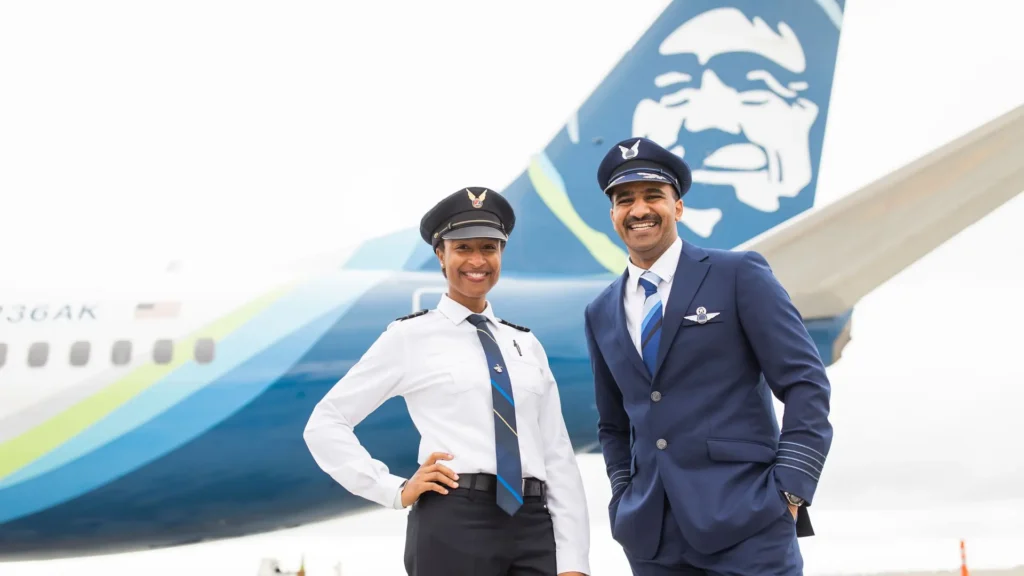
Steps to apply for an Alaska Airlines pilot job?
To apply for a pilot position at Alaska Airlines, follow these detailed steps to ensure you meet all requirements and submit your application effectively.
Steps to Apply for an Alaska Airlines Pilot Job
Step 1: Verify Your Qualifications
Ensure you meet the essential qualifications, which include:
- A minimum of 2,000 total flight hours in fixed-wing aircraft or 1,200 hours in high-performance military aircraft.
- A current FAA First Class Medical Certificate.
- An FAA Airline Transport Pilot (ATP) certificate.
- At least 1,000 hours of multi-engine turbine Pilot-in-Command (PIC) time is preferred.
Note: For more detailed required qualifications check above.
Step 2: Create an Online Profile
Go to the Alaska Airlines careers website and create a profile. This profile will enable you to apply for pilot positions and track your application status.
Step 3: Submit Your Application
Search for available pilot job openings on the website. Complete and submit your application, ensuring that all your flight experience and qualifications are accurately documented.
Step 4: Prepare for the Interview
If selected for an interview, prepare thoroughly. Research Alaska Airlines’ operations, values, and safety protocols. Practice common interview questions to articulate your experience and skills effectively.
Step 5: Attend the Interview
Participate in the interview with confidence. Highlight your flying experience, technical abilities, and commitment to safety and teamwork during the discussion.
Step 6: Complete Background Checks
After a successful interview, you will undergo background checks, including a Pilot Records Improvement Act (PRIA) evaluation. Be ready to provide any necessary documentation.
Step 7: Receive a Job Offer
If you pass all evaluations and background checks, you may receive a job offer from Alaska Airlines. Review the offer details carefully before accepting.
Step 8: Complete Required Training
Upon accepting the offer, you will need to complete any necessary training programs specific to Alaska Airlines before starting your role as a pilot.
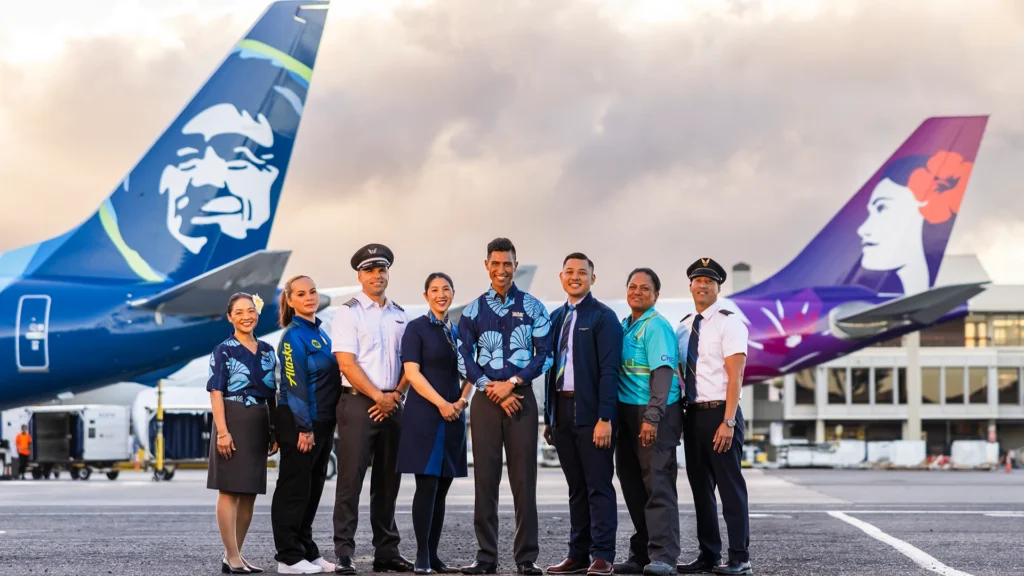
Alaska Airlines Pilot Salary – FAQs
Below are some frequently asked questions related to the Alaska Airlines Pilot Salary are as following :
The salary for Alaska Airlines pilots varies significantly based on experience and position. First officers typically earn between $107,876 and $225,800 + annually, while captains can make between $299,325 and $326,640 + per year.
Experience plays a crucial role in determining pilot salaries. For instance, a first officer with one year of experience might earn around $107,846, whereas one with twelve years could make approximately $225,800. Similarly, captains’ salaries increase with experience, starting at about $299,325 in their first year and potentially reaching up to $326,640 by their twelfth year.
The average annual salary for an Alaska Airlines pilot is approximately $124,842, which is about 39% above the national average for pilots in the U.S. However, this figure can vary widely depending on specific roles and individual circumstances.
Yes, Alaska Airlines pilots receive additional compensation beyond their base salary. This includes hourly flight pay, bonuses, per diem allowances for meals and travel, and contributions to retirement plans. These components can significantly enhance overall earnings.
Yes, pilots at Alaska Airlines have a guaranteed minimum salary based on their position and experience level. This ensures that they receive a stable income even if they fly fewer hours than expected in a given month.
Alaska Airlines offers competitive salaries compared to other major airlines. While some larger carriers may offer higher starting salaries, Alaska’s total compensation package—including benefits—remains attractive within the industry.
Stay tuned with us. Further, follow us on social media for the latest updates.
Join us on Telegram Group for the Latest Aviation Updates. Subsequently, follow us on Google News

